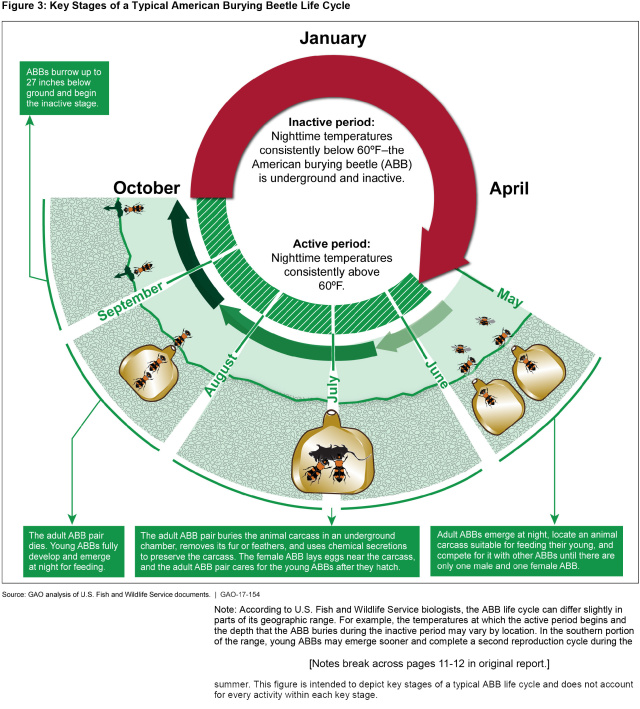Meet the Beetles
Long before John, Paul, George, and Ringo hit our shores on this day, February 7, in 1964, the American Burying Beetle was already present in more than 30 states and parts of Canada. However, in 1989, these beetles were listed as an endangered species by the U.S. Fish and Wildlife Service (FWS).
Today’s Watchblog explores FWS’s efforts to protect these beetles.
A Hard Day’s Night
American Burying Beetles are 1½-inch long, orange- and red-marked insects that find and bury the carcasses of birds and small mammals. Once underground, the adults secrete a substance that preserves the carcass so that they (and their young) may feed on it for a long time—a process that is central to their life cycle.
(Excerpted from GAO-17-154)
By burying these carcasses, the beetles control pests, keep the soil fertile, and help prevent diseases that can spread to humans. Researchers are also studying their secretions for possible antibacterial, antifungal, and food preservation uses.
American Burying Beetles, which live for about a year, only come out on summer nights and their population varies each year, making an exact count of their numbers a challenge. However, science has advanced since the beetles were first listed in 1989, and FWS is currently working to determine the overall status of the species.
Help!
While the exact cause of the beetles’ decline is unknown, biologists think that habitat loss and changes in access to their habitat due to widespread agriculture and development are likely factors. Settlers tilling the soil probably started their decline, which continued with the extinction of the passenger pigeon (a food source), the use of artificial lighting and pesticides, and the expansion of human development across their habitat. Historical records from the late 1800s show that the beetles were present in more than 30 states. Now, they are found in just 10 states--7 where they naturally occur and 3 where FWS has attempted to reintroduce them.
(Excerpted from GAO-17-154)
FWS is currently working with developers and other groups whose projects might affect the beetles’ habitat. Their conservation strategies include:
- Moving projects away from their habitat,
- Minimizing the impacts to their habitat when relocation is not possible, and
- Using compensatory mitigation strategies, such as conservation banks and in-lieu fee programs, to help reduce impact by conducting conservation activities.
Hey Watchdog
We found that, while FWS tracks key information about these conservation banks, its plan to track in-lieu fee programs has not been fully implemented. Last year, the agency signed an interagency agreement with the Army Corps of Engineers to modify a Corps’ database so that FWS can use it to track all in-lieu programs. However, FWS has not obligated funds for these modifications and has no timeline for doing so.
We recommended that the agency establish a timetable to modify this database—which would help improve FWS’s ability to evaluate whether its policies effectively protect the American Burying Beetle.
- Comments on GAO’s WatchBlog? Contact blog@gao.gov.
GAO Contacts
Related Products

GAO's mission is to provide Congress with fact-based, nonpartisan information that can help improve federal government performance and ensure accountability for the benefit of the American people. GAO launched its WatchBlog in January, 2014, as part of its continuing effort to reach its audiences—Congress and the American people—where they are currently looking for information.
The blog format allows GAO to provide a little more context about its work than it can offer on its other social media platforms. Posts will tie GAO work to current events and the news; show how GAO’s work is affecting agencies or legislation; highlight reports, testimonies, and issue areas where GAO does work; and provide information about GAO itself, among other things.
Please send any feedback on GAO's WatchBlog to blog@gao.gov.






